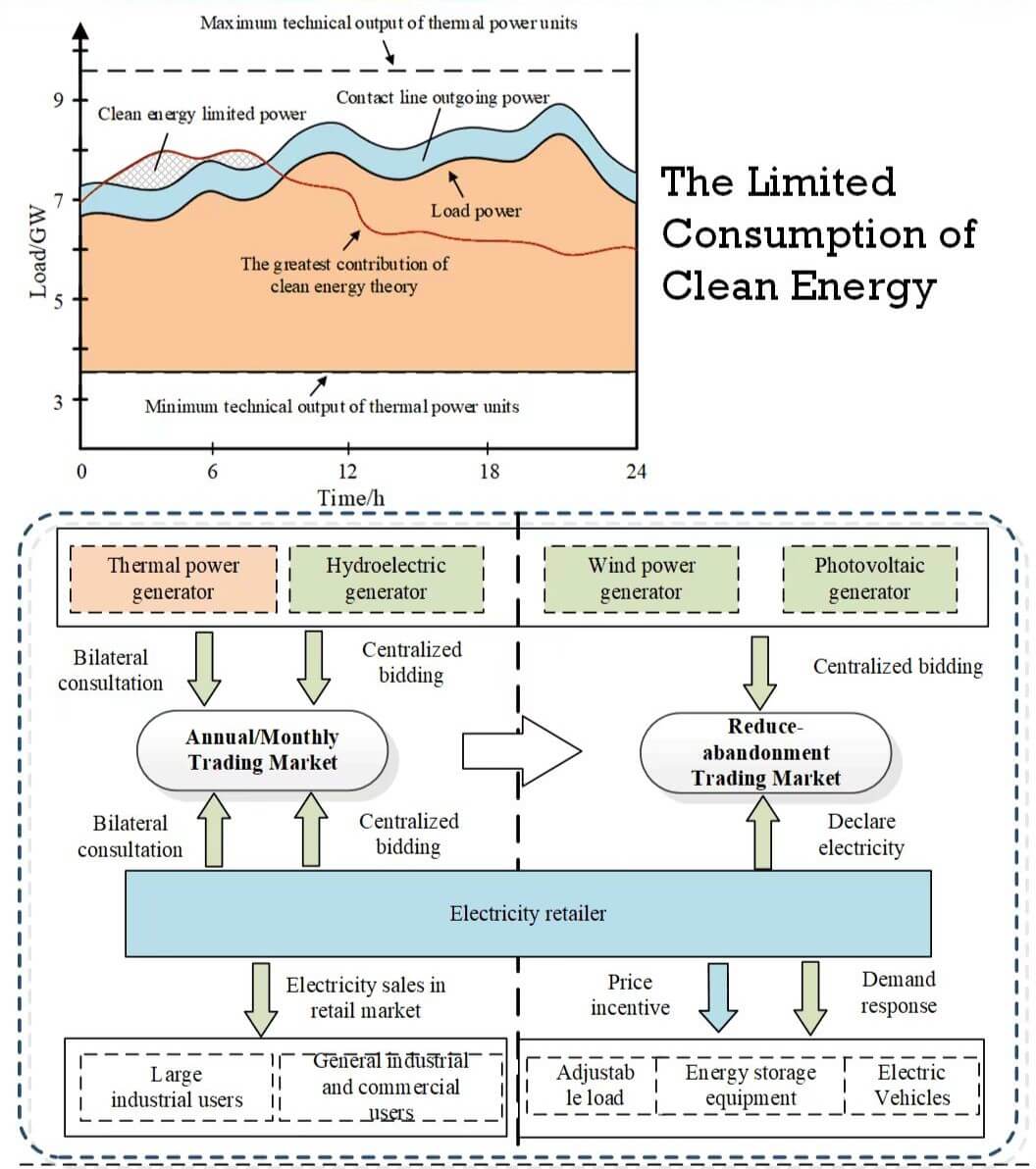 Open Access
Open Access
ARTICLE
Optimization of Electricity Purchase and Sales Strategies of Electricity Retailers under the Condition of Limited Clean Energy Consumption
1 Changsha University of Science & Technology, Changsha, 410114, China
2 State Grid Shaoyang Electric Power Company, Shaoyang, 422099, China
3 State Grid Ganzhou Electric Power Company, Ganzhou, 341099, China
* Corresponding Author: Peng Liao. Email:
(This article belongs to the Special Issue: Key Technologies of Renewable Energy Consumption and Optimal Operation under )
Energy Engineering 2023, 120(3), 701-714. https://doi.org/10.32604/ee.2022.024301
Received 27 May 2022; Accepted 10 August 2022; Issue published 03 January 2023
Abstract
In the process of my country’s energy transition, the clean energy of hydropower, wind power and photovoltaic power generation has ushered in great development, but due to the randomness and volatility of its output, it has caused a certain waste of clean energy power generation resources. Regarding the purchase and sale of electricity by electricity retailers under the condition of limited clean energy consumption, this paper establishes a quantitative model of clean energy restricted electricity from the perspective of power system supply and demand balance. Then it analyzes the source-charge dual uncertain factors in the electricity retailer purchasing and selling scenarios in the mid- to long-term electricity market and the day-ahead market. Through the multi-scenario analysis method, the uncertain clean energy consumption and the user’s power demand are combined to form the electricity retailer’s electricity purchase and sales scene, and the typical scene is obtained by using the hierarchical clustering algorithm. This paper establishes a electricity retailer’s risk decision model for purchasing and selling electricity in the mid- and long-term market and reduce-abandonment market, and takes the maximum profit expectation of the electricity retailer from purchasing and selling electricity as the objective function. At the same time, in the medium and long-term electricity market and the day-ahead market, the electricity retailer’s purchase cost, electricity sales income, deviation assessment cost and electricity purchase and sale risk are considered. The molecular results show that electricity retailers can obtain considerable profits in the reduce-abandonment market by optimizing their own electricity purchase and sales strategies, on the premise of balancing profits and risks.Graphic Abstract

Keywords
Cite This Article
 Copyright © 2023 The Author(s). Published by Tech Science Press.
Copyright © 2023 The Author(s). Published by Tech Science Press.This work is licensed under a Creative Commons Attribution 4.0 International License , which permits unrestricted use, distribution, and reproduction in any medium, provided the original work is properly cited.


 Submit a Paper
Submit a Paper Propose a Special lssue
Propose a Special lssue View Full Text
View Full Text Download PDF
Download PDF Downloads
Downloads
 Citation Tools
Citation Tools
